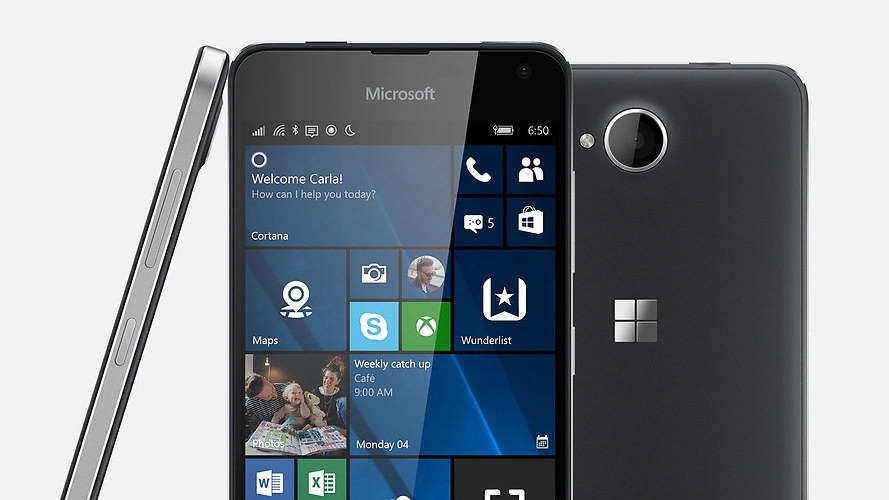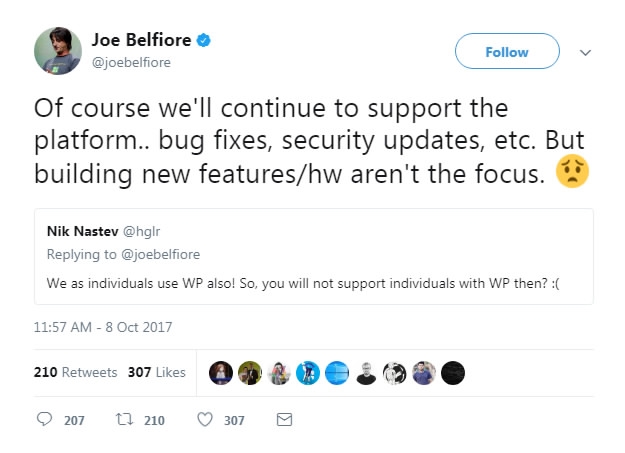
Mobile
22:59, 09-Oct-2017
Microsoft confirms the 'death sentence' of Windows Phone
By Fan Yixin

Microsoft has been holding onto it for over a year now, and it’s finally time to let it go.
In a series of tweets on Sunday, the software giant’s Vice President Joe Belfiore admitted that the hardware for Microsoft 10 Mobile is no longer in development, but the service for current users will continue.
“Of course we'll continue to support the platform.. bug fixes, security updates, etc. But building new features/hw aren't the focus,” Belfiore tweeted, adding a sad face emoji at the end.

Microsoft's Joe Belfiore admits the termination of Windows Phone development on Twitter.
Microsoft's Joe Belfiore admits the termination of Windows Phone development on Twitter.
Microsoft has branched the development into its feature2 update which will support the old phones until the end of 2019 or 2020.
The Windows Phone platform has been dead since the beginning of 2016. The final nail in the coffin was the dismal sales of its Lumia phones.
In Q2 2016, the software maker only sold 4.5 million of the Lumia phones, down by 57 percent compared to 10.5 million during the same time a year ago. Microsoft and Nokia sold 110 million of their Windows handsets combined, a 1.1-percent share of the 400 million phones sold in the same period.
Later in 2016, Microsoft cumulatively wrote off about 8.6 billion US dollars from its Nokia acquisition resulting in nearly 10,000 layoffs globally.
Windows Phone started off production as a promising alternative to iOS and Android seven years ago, but people later determined that they didn’t need Windows operating system for their smartphones. The phones’ app store has been facing the lack of apps since developers focused on iOS and Android apps.
“We have tried VERY HARD to incent app devs. Paid money.. wrote apps 4 them.. but volume of users is too low for most companies to invest,” Belfiore wrote, adding another sad face.
Belfiore even said that the Microsoft’s mobile phones would support iOS and Android systems, allowing Windows 10 Mobile users to switch to the other two platforms.
During the recent Build and Inspire conference, Satya Nadella, CEO of Microsoft, said the company will focus on multi-device scenarios and cloud-powered technologies with its “mobile-first, cloud-first” strategy, which means Microsoft will work on technologies that will not always involve Windows.
And the company was not joking.
The company rolled out Microsoft Launcher for Android recently. The launcher allows Android users to view photos, edit documents and read websites across devices from a mobile to a PC, similar to macOS’ Handoff feature.

SITEMAP
Copyright © 2018 CGTN. Beijing ICP prepared NO.16065310-3
Copyright © 2018 CGTN. Beijing ICP prepared NO.16065310-3